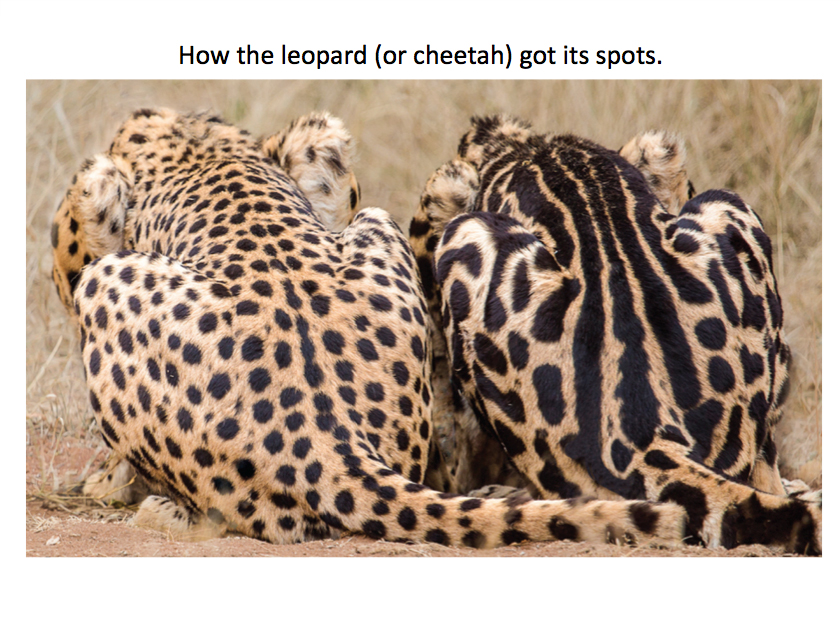 The cheetah on the left is the type that we're used to seeing. The one on the right is a variety of the same species. Its spots have apparently fused into stripes (along its back) or blotches (on its flanks). Amazingly, this dramatic difference is due to a single mutation. We can glean several lessons from this case study. First, spots and stripes may look quite different to our eyes, but they are similar from the genome's perspective because a single gene can toggle between them. Second, both patterns (spot or stripe) seem symmetric at first glance, but a closer inspection reveals subtle asymmetries, which are explained in the next slide. Finally, the tiny spots between the larger ones (more obvious in the cheetah on the left) provide an important clue as to how the patterns arise, as explained later for intercalary zebra stripes. This photo (taken at the Ann van Dyk cheetah preserve) was provided by Greg Barsh.
The cheetah on the left is the type that we're used to seeing. The one on the right is a variety of the same species. Its spots have apparently fused into stripes (along its back) or blotches (on its flanks). Amazingly, this dramatic difference is due to a single mutation. We can glean several lessons from this case study. First, spots and stripes may look quite different to our eyes, but they are similar from the genome's perspective because a single gene can toggle between them. Second, both patterns (spot or stripe) seem symmetric at first glance, but a closer inspection reveals subtle asymmetries, which are explained in the next slide. Finally, the tiny spots between the larger ones (more obvious in the cheetah on the left) provide an important clue as to how the patterns arise, as explained later for intercalary zebra stripes. This photo (taken at the Ann van Dyk cheetah preserve) was provided by Greg Barsh.
|
|
leopard | cheetah compared with butterfly | anglefish | zebra | mouse cloud leopard | giraffe | ant | beetle | treehopper stalk-eyed fly | ladybird | snake | The Interactive Fly resides on the web server of the Society for Developmental Biology. |

